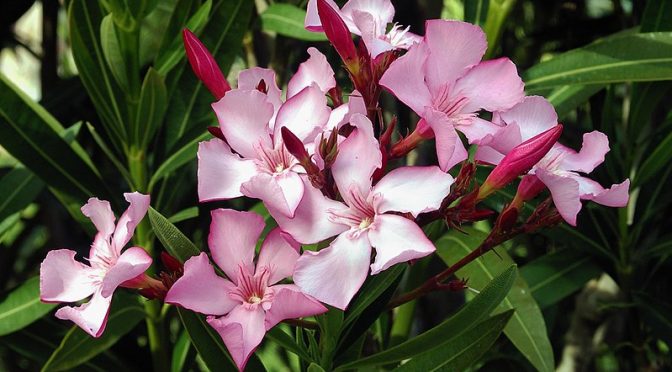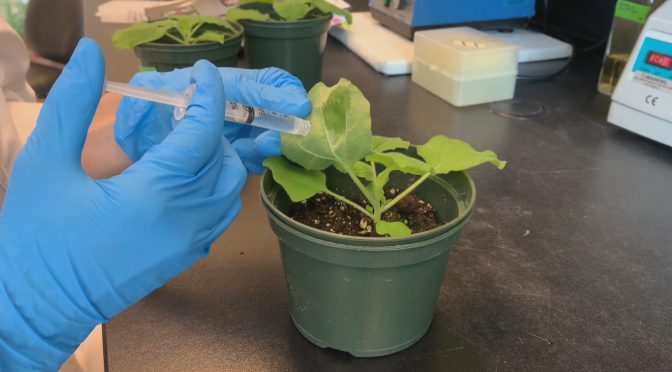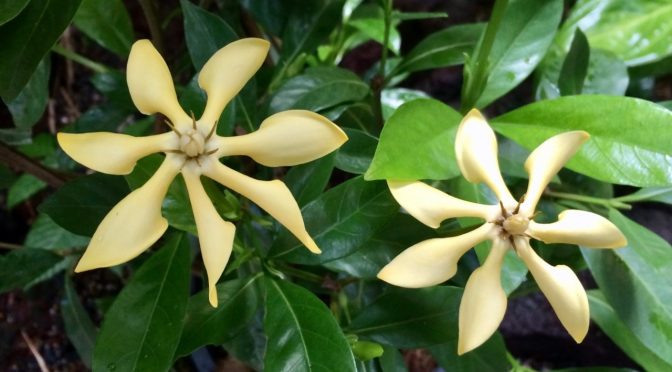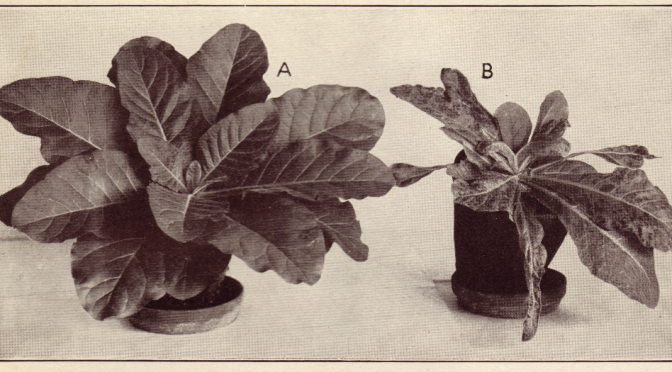Category: Plants & Medicine
-

Plant Based Remedies During Pandemics. A Historical Review
My aim is to stress the significant role of plants in global health (past, present and future) and the need of enhancing and protecting the botanical knowledge, from systematics to conservation, from ecology to ethnobotany. (Click on title for full story)
-

Human Drug Helps Control Fungus On Plants
The team administered acetohydroxamic acid onto the plants, a substance also used to treat harmful bacteria in the human stomach, and which is known to inhibit the breakdown of urea. “The acid prevents the harmful fungi from penetrating into the plants and from becoming infectious, (Click on title for full article)
-

Oleander As COVID19 Cure? You’d Die Trying
There are many other examples of natural plant extracts that are harmful. But oleander is particularly dangerous, because ingesting any part of the plant can lead to serious illness and possibly death. What’s more, there is no published scientific evidence on the safety of consuming oleandrin or its plant source, Nerium oleander. (Click on title…
-

Common North American Shrub Holds Promise For Fighting Superbug (MRSA)
Scientists discovered a compound in the leaves of a common shrub, the American beautyberry, that boosts an antibiotic’s activity against antibiotic-resistant staph bacteria. Laboratory experiments showed that the plant compound works in combination with oxacillin to knock down the resistance to the drug of methicillin-resistant Staphylococcus aureus, or MRSA. (Click on title for full story)
-

Will Your COVID19 Vaccine Be Consumed In A Salad?
“Plant-based vaccines are better for the developing world. They’re cheaper to produce. They don’t need … to be refrigerated for long periods of time.” (Click on title for full story.)
-

Plants Are Chemical Geniuses Creating New Chemicals To Meet New Challenges
It’s a known fact that the same chemical (for instance, caffeine, or crocin) can appear again and again in distant plant species,” One outstanding question was: How do the genes involved in the biosynthesis of such chemicals appear all at once in these different species? The work we published not only describes for the first…
-

Urban Forests Save Lives
The first city-wide health impact assessment of the estimated effects of a tree canopy initiative on premature mortality in Philadelphia suggests that increased tree canopy could prevent between 271 and 400 premature deaths per year. (Click on title for full story.)
-

Turning To Plant Science For Help Against COVID-19
Some of the earliest modern medicines are indeed plant natural products for treating infectious diseases. Plants have a lot to offer for treating COVID-19 and other infectious diseases, but it will require interdisciplinary research efforts to fully realize this potential. (Click on title for full story.)
-

You Can Thank Tobacco Plants That We Know About Viruses At All
When a blight of mosaic disease threatened European tobacco crops in the mid-1800s, plant pathologists set out to identify its root cause. For decades, only one forward-thinking botanist, Martinus Beijerinck, realized the source was neither a bacterial nor a fungal infection, but something completely different: a virus. (Click on title for full story.)
-

Researchers Look To Traditional Chinese Medicine To Control Epileptic Seizures
Only extracts from the bark of Magnolia officinalis, a tree native to China, reduced seizure-like behavior in both types of fish. In tests with mice, the researchers found that the magnolia bark’s most potent anti-seizure compound, magnolol, reduced the rodents’ otherwise drug-resistant seizures. It and similar compounds in magnolia bark could provide a starting point…
